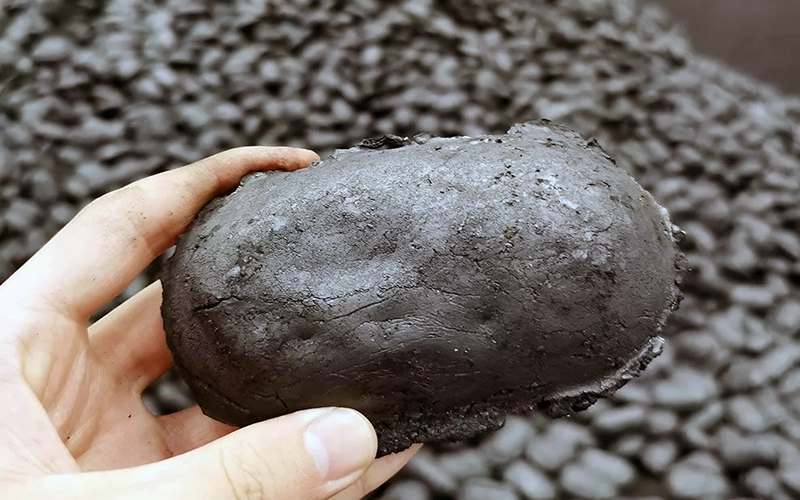Electrode paste, also known as Soderberg paste, is a critical material used in various metallurgical industries, especially in the production of ferroalloys, calcium carbide, and aluminum. It is a self-baking carbon electrode material that is added in a semi-solid form and baked in-situ by the heat generated in electric arc furnaces. Electrode paste enables the formation of continuous electrodes, making it an efficient and economical choice for large-scale industrial processes.
The main components of electrode paste are calcined anthracite, metallurgical coke, and coal tar pitch or petroleum pitch as a binder. These ingredients are carefully blended to achieve the desired consistency, conductivity, and baking behavior. The quality of electrode paste greatly influences furnace operation, energy consumption, and overall productivity. A well-formulated paste ensures steady electrode consumption, good mechanical strength, and minimal risk of breakage during use.
Electrode paste is typically used in submerged arc furnaces (SAF), where electrodes must operate under high temperatures and resist electrical and thermal stresses. The paste is added into the top portion of a steel casing that forms the electrode column. As the furnace operates, the heat generated by electrical resistance causes the paste to gradually soften, carbonize, and bake, forming a hard, conductive carbon electrode.
There are two primary forms of electrode paste: briquetted and cylindrical. Briquetted paste is formed into small blocks or pillow shapes, while cylindrical paste is extruded into logs. Both forms are suitable for different feeding systems and are chosen based on the design and capacity of the furnace. Some systems also use liquid paste, which is pumped directly into the electrode casing and solidifies in place.

One of the major advantages of electrode paste is its ability to form a continuous electrode without the need for pre-baked segments. This not only reduces operational costs but also minimizes downtime associated with electrode changeovers. Moreover, the use of self-baking electrodes is especially advantageous in furnaces with variable load conditions, as they provide flexibility and adaptability in performance.
However, the performance of electrode paste is sensitive to quality control in production and application. Factors like moisture content, particle size distribution, binder ratio, and storage conditions all affect its behavior in the furnace. As environmental regulations become stricter, the industry is also shifting toward low-emission binders and improved formulations to ensure cleaner and more sustainable production.
Overall, electrode paste remains an essential material in high-temperature industrial applications, offering a cost-effective and reliable solution for continuous electrode formation.
The electrode paste(code:THD)is divided into five specifications(THD-1……THD-5)according to technical metrics, implementing YB5235-1996, as follows.

| Item | THD-1 | THD-2 | THD-3 | THD-4 | THD-5 |
|---|---|---|---|---|---|
| Ash ≤ | 5.0 | 6.0 | 7.0 | 7.0 | 11.0 |
| Vaporization % | 12.0 - 15 | 12.0 - 15 | 9.5 - 13.5 | 11.5 - 15.5 | 11.5 - 15.5 |
| Anti-pressure Strength MPa ≥ | 17.0 | 15.7 | 19.6 | 19.6 | 19.6 |
| Electric Resistance μΩ·m ≤ | 68 | 75 | 80 | 90 | 90 |
| M Density g/cm³ | 1.38 | 1.38 | 1.38 | 1.38 | 1.38 |
| Item | Ash ≤ % | Vaporization % | Anti-pressure Strength ≥ MPa | Electric Resistance ≤ μΩ·m | M Density ≥ g/cm³ | Extension Rate % |
|---|---|---|---|---|---|---|
| 1# | 4 | 12 - 15.5 | 18 | 65 | 1.38 | 5 - 20 |
| 2# | 6 | 12 - 15.5 | 17 | 75 | 1.38 | 5 - 20 |
| 3# | Produced as per the design of furnace | |||||

© 2013 Vertix Co. All Rights Reserved. Leading Supplier Of Foundry & Metallurgical Materials